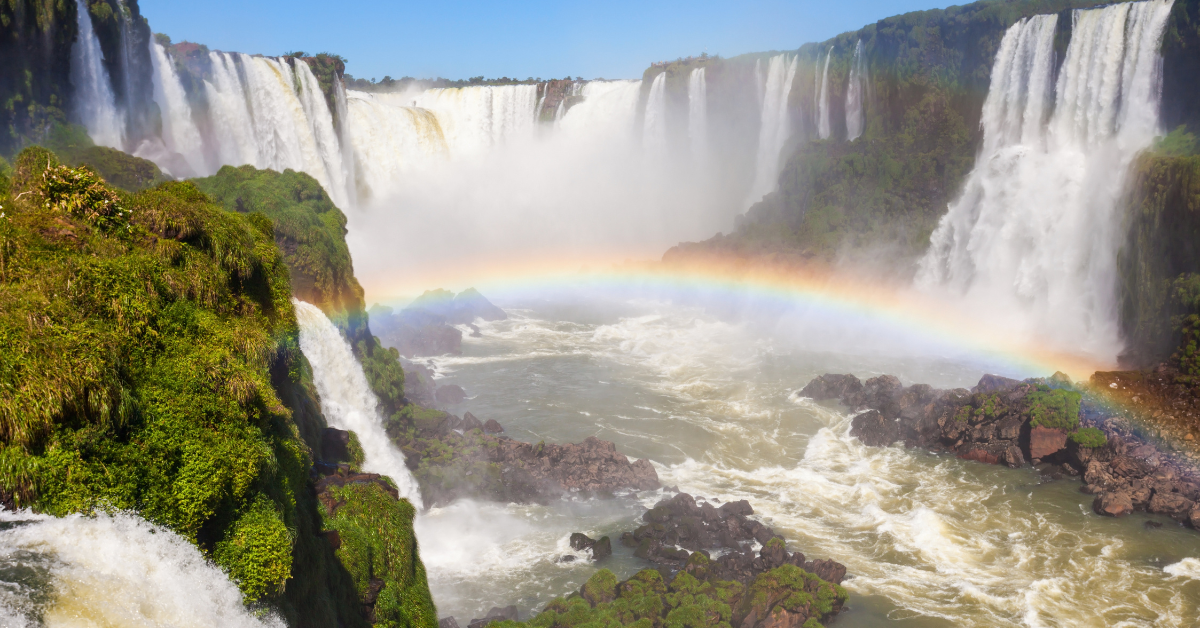Iguazu Falls, one of the world’s three great waterfalls, lies across Argentina and Brazil. For Japanese visitors, the evaluation goes beyond mere sightseeing. Their cultural values—such as reverence for nature and an emphasis on harmony—deeply shape their impressions, offering foreign visitors a fresh perspective.
- Basic Information on Iguazu Falls
- The Unique Appeal of Iguazu Falls for Japanese Visitors
- What Japanese Travelers Emphasize in Their Experiences
- Tips for Foreign Visitors to Understand the Japanese Perspective
- Japanese Travel Style and Iguazu Falls
- Why Iguazu Falls Leaves a Lasting Impression on Japanese Visitors
- Conclusion
Basic Information on Iguazu Falls
Scale and Features of Iguazu Falls
Iguazu Falls consists of more than 275 separate falls, forming one of the largest waterfall systems on Earth. While Niagara Falls is known for its straight-line, massive water volume, Iguazu spreads widely, branching into multiple cascades that form curtains of water. The falls stretch about 2,700 meters wide and reach a maximum drop of about 80 meters. Japanese visitors tend to be impressed not only by the power but also by the harmony and rhythm of the landscape.
Comparison with the World’s Three Great Waterfalls
| Name | Country | Width | Maximum Drop | Features |
|---|---|---|---|---|
| Iguazu Falls | Argentina & Brazil | Approx. 2,700m | Approx. 80m | Multiple falls creating a diverse landscape |
| Niagara Falls | USA & Canada | Approx. 1,000m | Approx. 57m | Immense water volume, highly powerful |
| Victoria Falls | Zimbabwe & Zambia | Approx. 1,700m | Approx. 108m | Towering mist known as “the smoke that thunders” |
The Unique Appeal of Iguazu Falls for Japanese Visitors
Appreciation of Harmony and Diversity
Japanese culture places high value on harmony in nature, which is why Iguazu’s multiple waterfalls flowing together are often described as “a symphony of nature.” Many Japanese travelers see not only the strength but also the gentleness and rhythm in the scene.
Seasonal Comparisons
The falls change dramatically between the rainy and dry seasons. Japanese travelers often relate this to the transitions of the four seasons, finding resonance between Iguazu’s variations and familiar seasonal shifts.
| Seasonal Impression | Iguazu Falls | Compared with Japan |
|---|---|---|
| Rainy season | Water volume surges, roaring loudly | Summer thunderstorms |
| Dry season | Gentle, calmer flow | Autumn leaves falling |
| Misty or cloudy | Creates a mystical atmosphere | Spring cherry blossoms in haze |
What Japanese Travelers Emphasize in Their Experiences
Sense of Scale and Spiritual Reflection
Many Japanese visitors interpret the grandeur of Iguazu as a reminder of “the smallness of human beings before the power of nature.” This connects with Japan’s cultural tradition of reverence for nature, leading some to see Iguazu not merely as a tourist attraction but almost as a sacred site.
Aesthetic Sensitivity to Details
Rather than focusing solely on the vast view, Japanese tourists are drawn to details such as rainbows and light reflecting in the spray. Rainbows, in particular, are seen as “a fleeting miracle” and are photographed with enthusiasm.
| Aspect | Japanese Perspective | Common Foreign Perspective |
|---|---|---|
| Entire view | Harmony over raw power | Focused on dynamic force |
| Details | Appreciation of rainbows, droplets | Often overlooked |
| Sound | Noticing contrast between roar and quiet | Primarily enjoying loudness |
Tips for Foreign Visitors to Understand the Japanese Perspective
Valuing Stillness as Much as Power
Although Iguazu roars with immense sound, Japanese visitors also notice the quiet ripples of water and birdsong. These subtle aspects are considered part of the overall experience.
Linking with Japanese Culture
By connecting Iguazu to concepts from Japanese culture—such as Zen gardens and tea ceremonies, which emphasize stillness and balance—foreign visitors can better understand how Japanese people perceive the falls.
| Japanese View | At Iguazu | How Foreign Visitors Can Relate |
|---|---|---|
| Stillness | Calmness amid the spray | Listen for natural sounds |
| Harmony | Unified landscape of many falls | See the whole like a painting |
| Change | Enjoying contrasts of rainy vs. dry season | Be mindful of seasonal timing |
Japanese Travel Style and Iguazu Falls
Observational Approach
Japanese travelers often take their time, choosing to observe details carefully rather than rushing. They appreciate not only the falls but also the flowers and birds along the trails, making the visit an immersive nature walk.
Respect for Silence and Manners
Many Japanese remain quiet, listening to nature instead of speaking loudly. This behavior makes Iguazu feel like a spiritual sanctuary and gives foreigners the impression that Japanese people deeply respect nature.
Why Iguazu Falls Leaves a Lasting Impression on Japanese Visitors
Educational and Cultural Background
Since many Japanese study world heritage sites in school, seeing Iguazu in person creates the moving impression of “a textbook image brought to life.”
Mental Refreshment
The massive water flow often gives Japanese visitors the sense that “daily worries feel small.” This provides a mental reset, similar to the refreshment found in hot springs or mountain climbing in Japan.
Conclusion
Iguazu Falls resonates with Japanese sensibilities not just for its scale and power but also for its harmonious beauty. Foreign travelers who adopt this Japanese perspective—valuing harmony, diversity, and change—will discover a much deeper experience than sightseeing alone.






